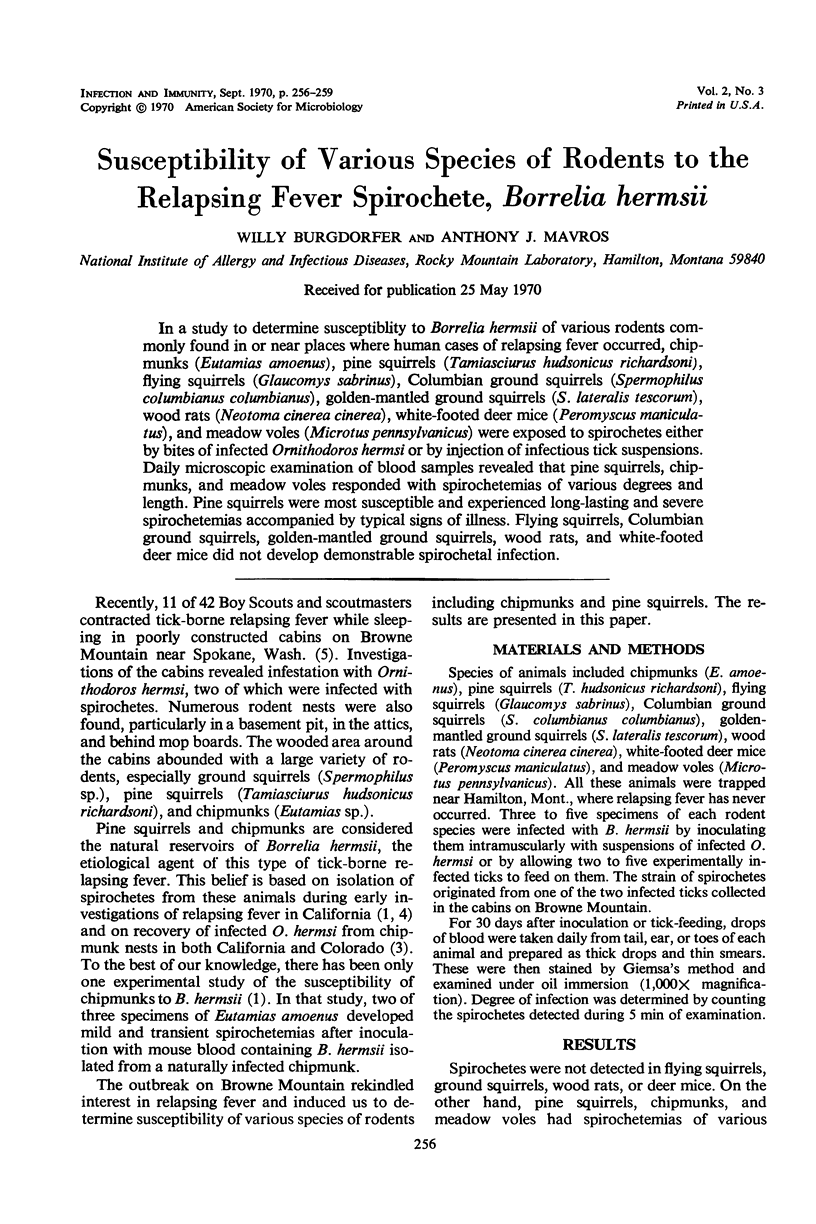Abstract
In a study to determine susceptibility to Borrelia hermsii of various rodents commonly found in or near places where human cases of relapsing fever occurred, chipmunks (Eutamias amoenus), pine squirrels (Tamiasciurus hudsonicus richardsoni), flying squirrels (Glaucomys sabrinus), Columbian ground squirrels (Spermophilus columbianus columbianus), golden-mantled ground squirrels (S. lateralis tescorum), wood rats (Neotoma cinerea cinerea), white-footed deer mice (Peromyscus maniculatus), and meadow voles (Microtus pennsylvanicus) were exposed to spirochetes either by bites of infected Ornithodoros hermsi or by injection of infectious tick suspensions. Daily microscopic examination of blood samples revealed that pine squirrels, chipmunks, and meadow voles responded with spirochetemias of various degrees and length. Pine squirrels were most susceptible and experienced long-lasting and severe spirochetemias accompanied by typical signs of illness. Flying squirrels, Columbian ground squirrels, golden-mantled ground squirrels, wood rats, and white-footed deer mice did not develop demonstrable spirochetal infection.
Full text
PDF



Images in this article
Selected References
These references are in PubMed. This may not be the complete list of references from this article.
- Porter G. S., Beck M. D., Stevens I. M. Relapsing Fever in California. Am J Public Health Nations Health. 1932 Nov;22(11):1136–1140. doi: 10.2105/ajph.22.11.1136. [DOI] [PMC free article] [PubMed] [Google Scholar]
- Thompson R. S., Burgdorfer W., Russell R., Francis B. J. Outbreak of tick-borne relapsing fever in Spokane County, Washington. JAMA. 1969 Nov 10;210(6):1045–1050. [PubMed] [Google Scholar]



